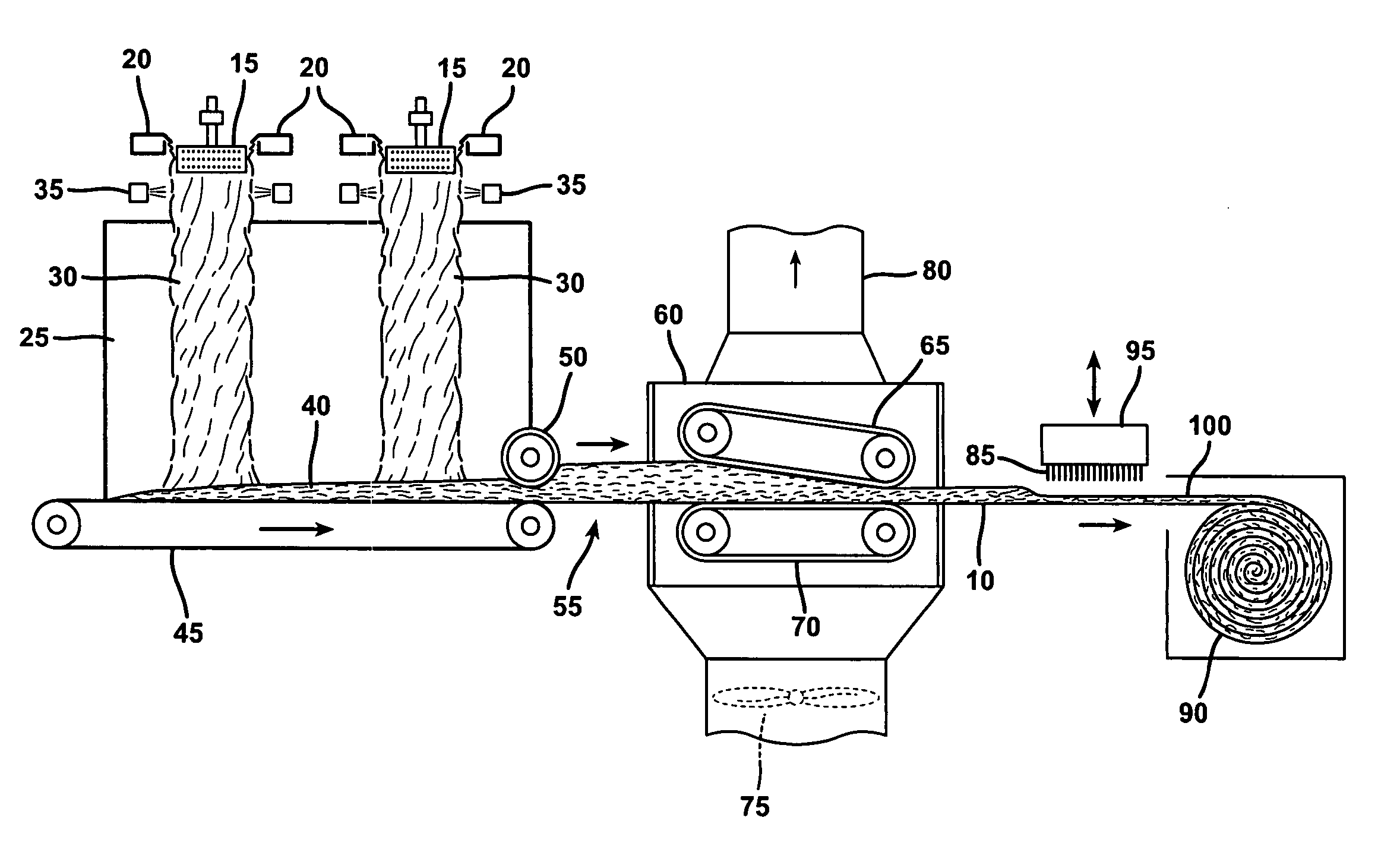Thin rotary-fiberized glass insulation and process for producing same
a technology of rotary fiber insulation and fiber insulation blanket, which is applied in the direction of weaving, manufacturing tools, lighting and heating apparatus, etc., can solve the problems of increasing the overall cost of water heater, reducing the service life of water heaters, so as to achieve a soft and comfortable feeling, save time and money, and be easy to work
- Summary
- Abstract
- Description
- Claims
- Application Information
AI Technical Summary
Benefits of technology
Problems solved by technology
Method used
Image
Examples
example
[0046] Needled Rotary Glass Fiber Insulation
[0047] Single component glass was melted and rotary-fiberized in a unit with multiple spinners. The hot fibers were sprayed with a polyacrylic acid glycerol (PAG) binder, the fibers were collected on a conveyor, and formed into an insulation pack. The insulation pack was then passed through a curing oven for a sufficient amount of time and at a sufficient temperature to cure the binder and form an insulation blanket. The average fiber diameter was 5.9 microns, the PAG binder content was 1.64% by weight of the total insulation blanket, the average density of the insulation blanket was 1.01 lb / cu ft, and the average thickness of the insulation blanket was 1.1 inches. The nominal thermal conductivity (k-value) at 300° F. was determined to be 0.51 Btu-in / hr-sq ft-F.
[0048] The insulation blanket was then needled to increase the average density and reduce the average thickness. A single-sided needling apparatus with 36 gauge needles was used. ...
PUM
| Property | Measurement | Unit |
|---|---|---|
| thickness | aaaaa | aaaaa |
| thickness | aaaaa | aaaaa |
| density | aaaaa | aaaaa |
Abstract
Description
Claims
Application Information
 Login to View More
Login to View More - R&D
- Intellectual Property
- Life Sciences
- Materials
- Tech Scout
- Unparalleled Data Quality
- Higher Quality Content
- 60% Fewer Hallucinations
Browse by: Latest US Patents, China's latest patents, Technical Efficacy Thesaurus, Application Domain, Technology Topic, Popular Technical Reports.
© 2025 PatSnap. All rights reserved.Legal|Privacy policy|Modern Slavery Act Transparency Statement|Sitemap|About US| Contact US: help@patsnap.com



